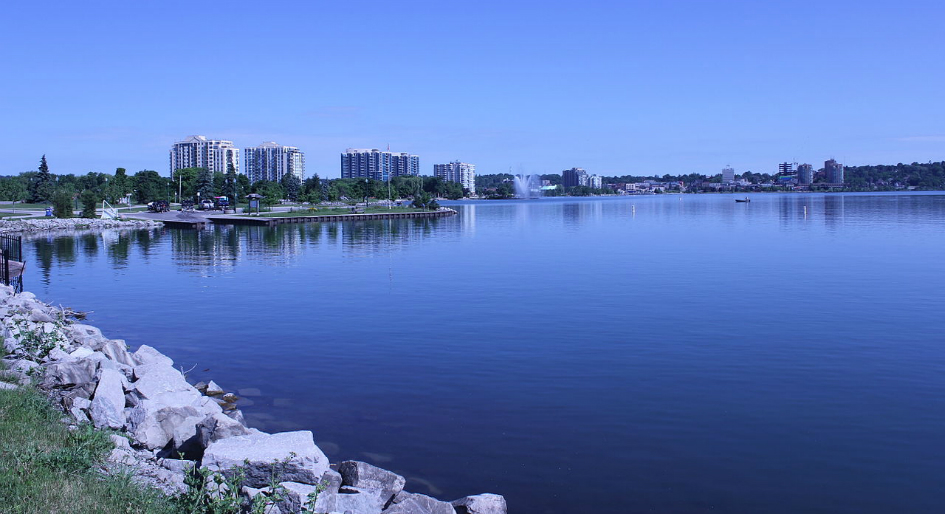A new survey of RE/MAX brokers and agents has found that recreational properties across Canada are seeing a healthy year-over-year price increase, with 74 per cent of regions surveyed experiencing an uptick.
Compared to 2018, the median price of recreational properties, including waterfront, non-waterfront, water access and ski-in properties, has increased seven per cent across the board. Median prices were calculated for the periods of July 2017 to June 2018, and July 2018 to June 2019.
“In the mainstream urban housing market, we’re seeing a marked contrast between Eastern and Western Canada, with the former showing promising gains while the latter is flat to negative. Meanwhile, the recreational market is strong across much of the country except in the Prairies, where the region’s softer economy has kept demand low,” says Christopher Alexander, Executive Vice President and Regional Director, RE/MAX of Ontario-Atlantic Canada. “And ultimately the reasons for the contrast between urban and recreational markets are diverse. Activity is being driven by strong employment and economic conditions, but it’s also being influenced by Millennial buyers who find themselves squeezed out of the less affordable urban market.”
A RE/MAX survey conducted in the spring showed that 51 per cent of Canadian Millennials are in the market to purchase a recreational property, an increase of 14 per cent from 2018.
Overall, British Columbia saw prices rise eight per cent, with Tofino leading the charge with a median price increase of 35 per cent, with waterfront property prices up a staggering 80 per cent. The increase is due to low inventory in the area. Shuswap took second place in median price growth, rising by 25 per cent.
The Prairies, however, are experiencing a decline, with year-over-year prices taking a three per cent hit. The median price for waterfront, non-waterfront and water access properties in North Battleford and Meadow Lake, SK dropped by 10 per cent. Teulon and Interlake, MB, also saw an 11 per cent decline in median price. Economic factors in the region have contributed to the decrease. Bucking the trend in the Prairies are Canmore, AB and Qu’appelle Valley, SK, which have both seen median prices increase by six per cent.
“There is little doubt that economic factors in the Prairies have affected demand in the recreational market,” says Elton Ash, Regional Executive Vice President, RE/MAX of Western Canada. “At the same time, BC’s economy is still going strong and has experienced an increased interest in its recreational market in recent times.”
Like British Columbia, Ontario saw an overall increase of eight per cent, with the median price for water-access properties in areas such as Collingwood and Blue Mountain increasing as much as 36 per cent. Additionally, waterfront properties in Haliburton saw a price increase of 29 per cent. The only regions that showed a decrease in median price are Manitoulin Island, French River and the Rideau Lakes Region.
Atlantic Canada also showed a marked increase in median price, rising seven per cent over 2018 figures and well above the 0.13 per cent price increase between 2017 and 2018. The strongest market is Prince Edward Island, where median price rose by 15 per cent overall for both waterfront and non-waterfront properties. Shediac, NB and Newfoundland’s East Coast each experienced an eight-per-cent increase in median price as well.
“Prince Edward Island has experienced a growing popularity of investment properties,” says Alexander. “The influx of non-residents to the province has had a tremendous effect, with some purchasing upwards of six recreational properties and renting them out during tourist season.”
Nationally, the median price for ski-in properties has increased by 10 per cent compared to 2018. Waterfront properties come in at a close second, rising nine per cent. No property type experienced a decline in median price compared to 2018.
RE/MAX brokers foresee current trends continuing into 2020, with Millennials starting to exercise more purchasing power. The Prairies will remain relatively stagnant if the economy does not pick up, making it difficult for younger buyers to enter the market. Ontario brokers see a mix of demographics continuing to purchase in the region while recreational properties in Atlantic Canada continue to gain in popularity.
Key Findings from the 2019 RE/MAX Recreational Property Omnibus Survey
1. 40 per cent of all Canadians, and 56 per cent of Millennials, are in the market for a recreational property
2. Canadians cite the following reasons to own or want to own a recreational property:
• It is where I can go and relax and spend time with friends and family = 64 per cent
• It is a getaway home = 58 per cent
• I can do activities I can’t do at my permanent residence (hiking, fishing, etc.) = 43 per cent
• It is an investment property = 30 per cent
• It is a retirement home = 20 per cent
• Other = 2 per cent
3. 30 per cent of all Canadians say they use or would use a recreational property as an investment opportunity
• Millennials rank the highest among this group, at 33 per cent, compared to Boomers at 28 per cent
4. More than half (54 per cent) of Canadians who own or are considering owning a recreational property are willing to travel up to two hours, and 24 per cent saying they would travel two hours. Slightly less (22 per cent) are willing to travel three or more hours.
5. Canadians identify the following features as important when considering their current recreational property or a future purchase of a recreational property:
• Affordable purchase price = 61 per cent
• Reasonable maintenance costs = 46 per cent






